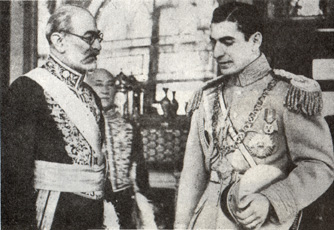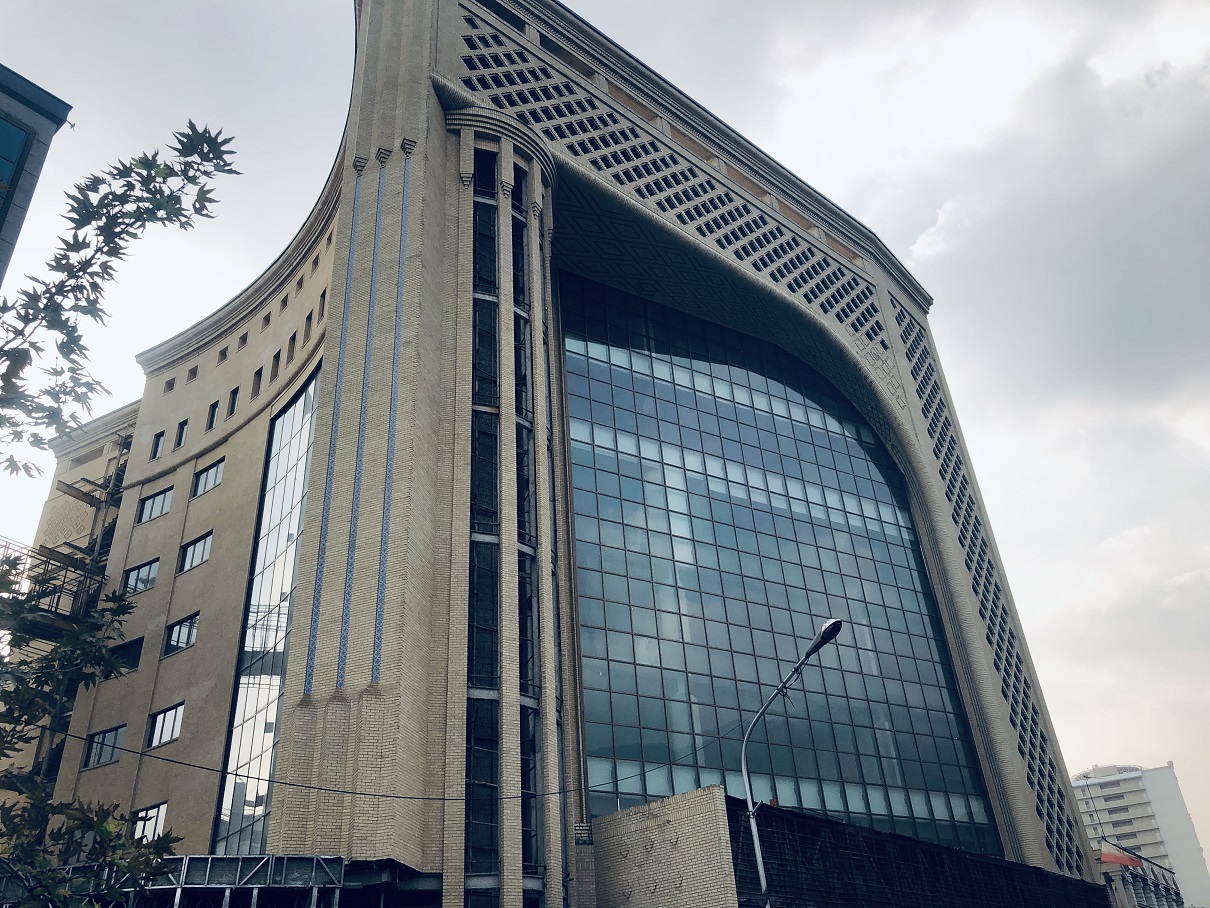|
2nd Iranian Majlis
2nd Iranian Majlis was commenced on 15 November 1909 and ended on 25 December 1911. It "moved in the same direction as its predecessor reformist and nationalist parliament reorganising the state bureaucracy, but passing laws on education, health and taxation as well. When it rejected an ultimatum from the Russian Empire The Russian Empire was an empire and the final period of the Russian monarchy from 1721 to 1917, ruling across large parts of Eurasia. It succeeded the Tsardom of Russia following the Treaty of Nystad, which ended the Great Northern War. ..., it too was dissolved in December 1911." References 2nd term of the Iranian Majlis {{Iran-poli-stub ... [...More Info...] [...Related Items...] OR: [Wikipedia] [Google] [Baidu] |
Sublime State Of Persia
Qajar Iran (), also referred to as Qajar Persia, the Qajar Empire, '. Sublime State of Persia, officially the Sublime State of Iran ( fa, دولت علیّه ایران ') and also known then as the Guarded Domains of Iran ( fa, ممالک محروسه ایران '), was an Iranian state ruled by the Qajar dynasty, which was of Turkic origin,Cyrus Ghani. ''Iran and the Rise of the Reza Shah: From Qajar Collapse to Pahlavi Power'', I. B. Tauris, 2000, , p. 1William Bayne Fisher. ''Cambridge History of Iran'', Cambridge University Press, 1993, p. 344, Dr Parviz Kambin, ''A History of the Iranian Plateau: Rise and Fall of an Empire'', Universe, 2011, p.36online edition specifically from the Qajar tribe, from 1789 to 1925.Abbas Amanat, ''The Pivot of the Universe: Nasir Al-Din Shah Qajar and the Iranian Monarchy, 1831–1896'', I. B. Tauris, pp 2–3; "In the 126 years between the fall of the Safavid state in 1722 and the accession of Nasir al-Din Shah, the Qajars evolved from ... [...More Info...] [...Related Items...] OR: [Wikipedia] [Google] [Baidu] |
Baharestan
Baharestan ( fa, بَهارِستان ) is the name given to the historic Iranian parliament building, inaugurated in 1906 (see Persian Constitutional Revolution). It was adopted from the name of the neighborhood and a small palace that adorned the place. The Baharestan remained the location for the lower house of the Iranian parliament (the Senate had moved to a new building in central Tehran) until the Iranian Revolution in 1979. After the revolution, the parliament became unicameral and met at the Senate building, and to a newly built building in Baharestan in 2004. See also * 2017 Tehran attacks The 2017 Tehran attacks were a series of two simultaneous terrorist attacks that occurred on 7 June 2017 that were carried out by five terrorists belonging to the Islamic State of Iraq and the Levant (ISIL) against the Iranian Parliament buildi ... References Buildings and structures in Tehran National Consultative Assembly {{Iran-struct-stub ... [...More Info...] [...Related Items...] OR: [Wikipedia] [Google] [Baidu] |
Persian Legislative Election, 1909
Parliamentary elections were held for the second time in Persia Iran, officially the Islamic Republic of Iran, and also called Persia, is a country located in Western Asia. It is bordered by Iraq and Turkey to the west, by Azerbaijan and Armenia to the northwest, by the Caspian Sea and Turkmeni ... in 1909. The new Parliament convened on 19 November. Dieter Nohlen, Florian Grotz & Christof Hartmann (2001) ''Elections in Asia: A data handbook, Volume I'', p73 The majority of the parliament was held by a some 53-seats coalition pioneered by Moderate Socialists Party. References 1909 in Iran 1909 elections in Asia National Consultative Assembly elections 2nd term of the Iranian Majlis Politics of Qajar Iran {{Iran-election-stub ... [...More Info...] [...Related Items...] OR: [Wikipedia] [Google] [Baidu] |
1st Iranian Majlis
The 1st Iranian Majlis was a legislative assembly from October 7, 1906, to June 23, 1908. Its session was formally opened by Mozaffar ad-Din Shah Qajar. Mozaffar's son and successor, Mohammad Ali Shah Qajar, became Shah on January 21, 1907. He was against the constitution that was ratified during the reign of his father. In 1907 Mohammad Ali dissolved Majles (Iranian parliament/National assembly) and declared the Constitution abolished because it was contrary to Islamic law. On June 23, 1908, the Shah bombarded the Majles with the military and political support of Russia and Britain. Morteza Gholi Khan Hedayat was the first Chairman of the period. According to W. Morgan Shuster, "Five days later easured from February 1stthe Persian Minister of Finance, Saniu'd-Dawleh was shot and killed in the streets of Tehran by two Georgians, who also succeeded in wounding four of the Persian police before they were captured. The Russian consular authorities promptly refused to allow these ... [...More Info...] [...Related Items...] OR: [Wikipedia] [Google] [Baidu] |
3rd Iranian Majlis
3rd Iranian Majlis was commenced on 6 December 1914 and ended on 13 November 1915. Fraction members Neutrality was in coalition with the Moderates Moderate is an ideological category which designates a rejection of radical or extreme views, especially in regard to politics and religion. A moderate is considered someone occupying any mainstream position avoiding extreme views. In American .... References {{Iranian Majlis 3rd term of the Iranian Majlis ... [...More Info...] [...Related Items...] OR: [Wikipedia] [Google] [Baidu] |
National Consultative Assembly
The National Consultative Assembly ( fa, مجلس شورای ملی, Mad̲j̲les-e s̲h̲ūrā-ye mellī) or simply Majles, was the national legislative body of Iran from 1906 to 1979. It was elected by universal suffrage, excluding the armed forces A military, also known collectively as armed forces, is a heavily armed, highly organized force primarily intended for warfare. It is typically authorized and maintained by a sovereign state, with its members identifiable by their distinct ... and convicted criminals but since 1963 including women, who might both vote and be elected. Notes and references * Afary, Janet. ''The Iranian Constitutional Revolution, 1906-1911''. Columbia University Press. 1996. {{coord, 35.6903, N, 51.4333, E, source:wikidata, display=title National legislatures 1906 establishments in Iran 1906 in law 20th century in Iran National Consultative Assembly Legislature of Iran Politics of Qajar Iran Pahlavi Iran ... [...More Info...] [...Related Items...] OR: [Wikipedia] [Google] [Baidu] |
Mirza Sadeq Khan
Sadegh Sadegh ( fa, صادق صادق), also known by the inherited bestowed title Mostashar al-Dowleh ( fa, مستشارالدوله), was an Iranian diplomat and constitutionalist Constitutionalism is "a compound of ideas, attitudes, and patterns of behavior elaborating the principle that the authority of government derives from and is limited by a body of fundamental law". Political organizations are constitutional ... politician. References * {{Chairmen of the Majlis of Iran People of the Persian Constitutional Revolution Speakers of the National Consultative Assembly Members of the 1st Iranian Majlis Members of the 2nd Iranian Majlis Ambassadors of Iran to Turkey Democrat Party (Persia) politicians Members of the Senate of Iran People of Pahlavi Iran 19th-century Iranian people 20th-century Iranian people ... [...More Info...] [...Related Items...] OR: [Wikipedia] [Google] [Baidu] |
Mohammad-Ali Foroughi
Mohammad Ali Foroughi ( fa, محمدعلی فروغی; early August 1877 – 26 or 27 November 1942), also known as Zoka-ol-Molk ( Persian: ذُکاءُالمُلک), was a writer, diplomat and politician who served three terms as Prime Minister of Iran. He wrote numerous books on ancient Iranian history and is known for founding the Academy of Iran. Early life and education Foroughi was born in Tehran to a merchant family from Isfahan. His ancestor, Mirza Abutorab was the representative of Isfahan in Mugan plain during Nader Shah Afshar's coronation. His grandfather, Mohammad Mehdi Arbab Isfahani, was amongst the most influential merchants of Isfahan and was skilled in history and geography. His father Mohammad Hosein Foroughi was the translator of the Shah from Arabic and French. He was also a poet and published a newspaper called Tarbiat. Naser al-Din Shah Qajar nicknamed Mohammad Hosein, Foroughi, after hearing a poem that he had written.Bagher Agheli, A biography of po ... [...More Info...] [...Related Items...] OR: [Wikipedia] [Google] [Baidu] |
Esmail Momtaz Od-Dowleh
Esmail Momtaz od-Dowleh ( fa, اسماعیل ممتازالدوله) was a notable Iranian statesman of the early twentieth century. Born in Tabriz in 1880, he was one of the original Parliamentarians of the First Majles in 1906. He was also its fourth Speaker. When the Parliament was bombarded by Mohammad Ali Shah, he was the speaker of majlis and escaped to Paris. In London he interviewed about the crisis which printed in European newspapers. Momtaz od-Doleh was also Minister of Culture, Minister of Finance, Minister of Education and Minister of Justice. He was the actual writer of the Persian Constitution of 1906, being fluent in French and able to copy extracts lifted from the Belgian constitution The Constitution of Belgium ( nl, Belgische Grondwet, french: Constitution belge, german: Verfassung Belgiens) dates back to 1831. Since then Belgium has been a parliamentary monarchy that applies the principles of ministerial responsibility f .... Momtaz died in 1933 at the ... [...More Info...] [...Related Items...] OR: [Wikipedia] [Google] [Baidu] |
Hossein Pirnia
Hossein Pirnia, also known as Mo'tamen al Molk ( fa, حسین پیرنیا; 1875–1948) was an Iranian politician. His father, Mirza Nasrullah Khan, and his elder brother, Hassan Pirnia, both served as Prime Minister of Iran. Career He served as speaker of the Parliament of Iran from 1914 to 1925, and again from 1928 to 1929. Pirnia played a significant role in the drafting of the Persian Constitution of 1906 The Persian Constitution of 1906 ( fa, قانون اساسی مشروطه, Qanun-e Asasi-ye Mishirutâh), was the first constitution of the Sublime State of Persia (Qajar Iran), resulting from the Persian Constitutional Revolution and it was w ... and served as Minister of Education in 1918 and Minister without portfolio in 1920. He was elected to every session of the Parliament (Majlis) from 1906, serving as speaker for more than eleven years in total. In 1943 he was elected from Tehran to the 14th session of Parliament but declined to serve. Sources * Ghani, Cyrus. ... [...More Info...] [...Related Items...] OR: [Wikipedia] [Google] [Baidu] |
Majlis Research Center
The Research Center of Islamic legislative Assembly () is the research arm of the Iranian parliament (Majlis). This center works primarily and directly for members of the Iranian parliament, their committees and staff on a confidential, nonpartisan basis. Its president is Babak Negahdari since 5 September 2021. This center has access to the classified information of the Foreign Ministry, Intelligence Ministry and Defense Ministry of Iran. Objectives and duties of Parliament (Majlis) Research Center According to "Job Description of Parliament (Majlis) Research Center" Act, the aim of establishing the center is to carry out research projects in order to provide expertise and advisory opinions to the representatives, the Commission and Parliament's executive board. According to Article (2) of Job Description of Majlis Research Center Act, its functions are as follows: # Study and provide expert opinions on all bills # Collect, review, and adjust the opinions of academic resea ... [...More Info...] [...Related Items...] OR: [Wikipedia] [Google] [Baidu] |




